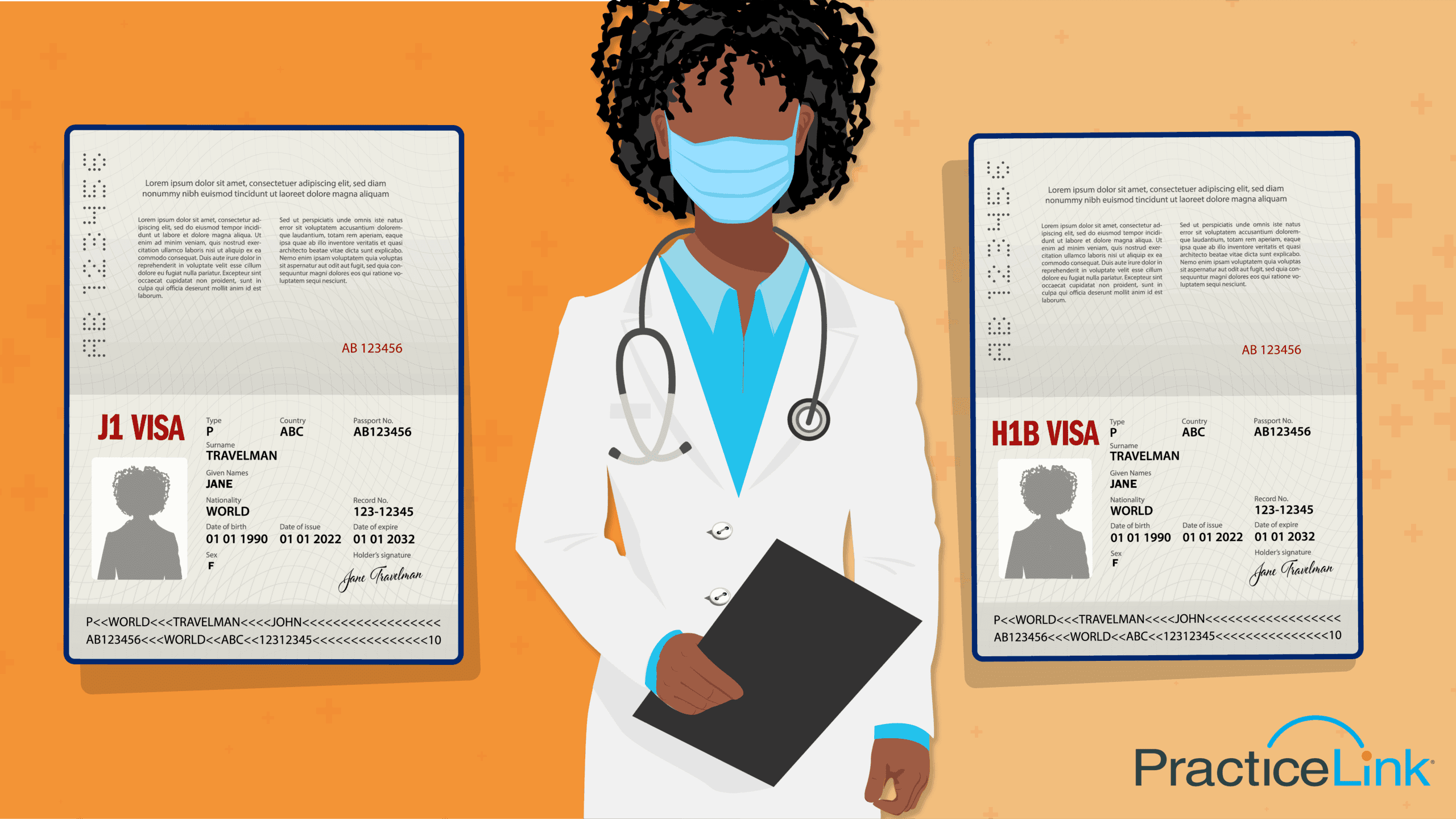
Is H-1B visa better than J-1 visa?
Many International Foreign Graduates (IMGs) and international physicians face a common question: Is the H-1B visa better than the J-1 visa? Each physician visa type has its advantages and disadvantages, and the best choice depends on a doctor’s long-term career goals, residency program availability and immigration plans.
Understanding the physician visa process is key for IMGs seeking to work in the U.S. Additionally, comparing the J1 vs H1B visa for medical residency can help foreign physicians determine which visa best suits their needs.
Is H1B visa better than J1 visa?
The J1 vs H1B visa for medical residency debate is one of the most important decisions for IMGs. While both visas allow doctors to complete their residency training in the U.S., they come with different benefits and restrictions.
Key differences between J-1 and H-1B visas:
| Feature | J-1 Visa | H-1B Visa |
| Sponsorship | Sponsored by ECFMG | Sponsored by employer (hospital, clinic, or research institution) |
| Home Residency Requirement | Requires a 2-year return to home country unless waived | No home residency requirement |
| Work Flexibility | Limited to approved training programs | Allows direct employment and moonlighting in some cases |
| Path to Permanent Residency | Requires waiver or transition to another visa | More direct path to Green Card |
| Availability | More residency programs accept J-1 visas | Fewer programs sponsor H-1B visas |
For physicians planning to stay in the U.S. long term, the H-1B visa is often the better choice due to its lack of a home residency requirement and its ability to transition more easily to permanent residency. However, J-1 visas are more widely accepted by residency programs, making them a more accessible option for many IMGs.
What is a J1 visa for medical doctors?
The J1 visa is a non-immigrant visa for foreign medical graduates who have been accepted into a U.S. residency or fellowship program. It is issued under the sponsorship of the Educational Commission for Foreign Medical Graduates (ECFMG) and allows physicians to complete graduate medical training in the U.S.
Key features of a J-1 visa:
- Sponsored by ECFMG
- Requires completion of USMLE Step 1 and Step 2 CK
- Requires a two-year home residency requirement upon completion of training (unless a waiver is obtained)
- Limits work to approved training programs
The J-1 visa is widely accepted by residency programs, making it the most common visa option for foreign medical graduates. However, physicians who wish to remain in the U.S. after completing their training must either fulfill the two-year home residency requirement or obtain a waiver.
What are the disadvantages of J1 visa?
Although the J-1 visa is a common pathway for IMGs, it has several drawbacks when compared to the H1B visa:
- Two-Year Home Residency Requirement – After completing training, J-1 visa holders must return to their home country for at least two years before they can apply for an H-1B visa or Green Card unless they qualify for a waiver.
- Limited Career Flexibility – J-1 physicians can only work in approved residency or fellowship programs and cannot moonlight outside of their training.
- Waiver Dependency – Those who wish to stay in the U.S. must secure a J-1 to H-1B waiver by working in an underserved area for at least three years.
- Spousal Work Restrictions – Dependents on J-2 visas can only work in the U.S. if they obtain special work authorization, while H-4 dependents (of H-1B visa holders) do not have this restriction.
Because of these challenges, physicians planning to stay in the U.S. long term may prefer the H-1B visa.
Can I convert a J1 visa to H1B?
For J-1 visa holders who wish to remain in the U.S., transitioning to an H-1B visa is possible through a J1 to H1B waiver. The most common way to obtain this waiver is through the Conrad 30 Waiver Program, which allows J-1 physicians to switch to an H-1B visa by working in a medically underserved area for three years.
Common J-1 Waiver Options:
- Conrad 30 Waiver – Requires three years of service in an underserved area.
- Federal Agency Waivers – Certain federal programs offer J-1 waivers for physicians working in critical need areas.
- Persecution or Hardship Waivers – Available for physicians facing extreme hardship or persecution if they return to their home country.
Once a J-1 waiver is approved, the physician can transition to an H-1B visa and later apply for a Green Card if they wish to stay in the U.S. permanently.
Determining whether the H-1B visa is better than the J-1 visa depends on a physician’s long-term career goals. The J-1 visa is easier to obtain due to its widespread acceptance among residency programs but comes with a mandatory home residency requirement unless waived. In contrast, the H-1B visa provides greater flexibility, no home residency requirement and a clearer path to permanent residency, making it a better choice for doctors who want to build a long-term career in the U.S.
For IMGs navigating the U.S. residency process, choosing the right visa is a critical step. If you are considering applying for a residency program in the U.S., look into resources and start exploring your options today.

